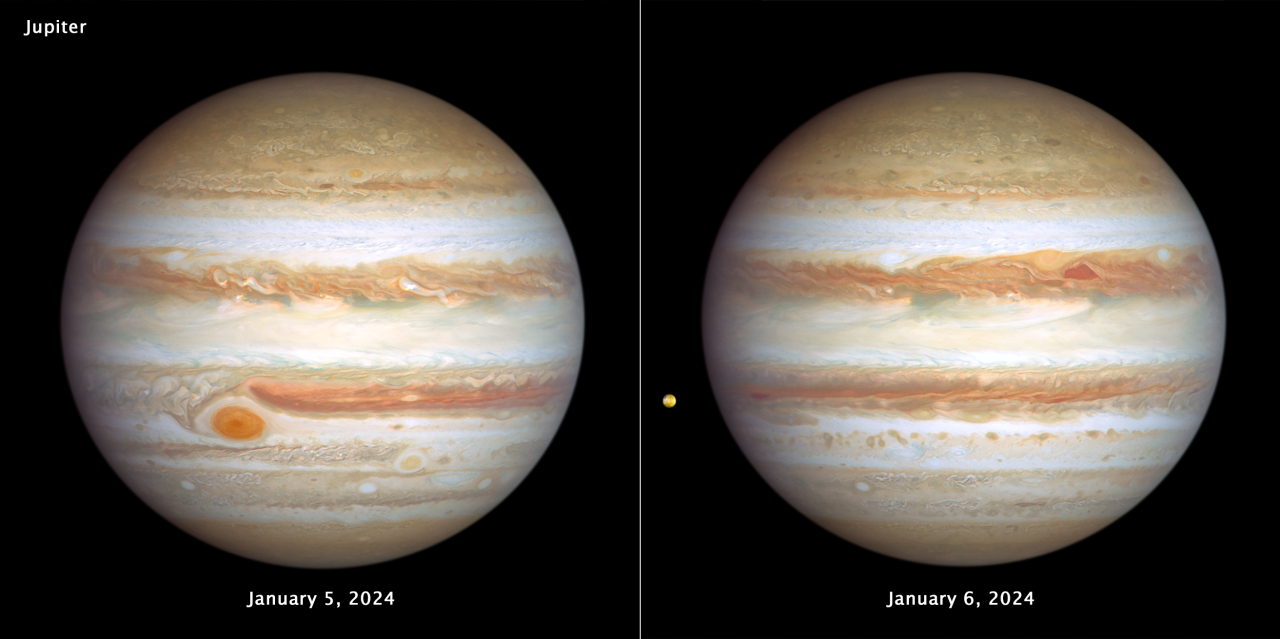Hubble revisits Jupiter in all its banded glory

As part of the Outer Planet Atmospheres Legacy program (OPAL), NASA's Hubble Space Telescope revisited Jupiter in these latest images. The images, taken on January 5-6, provide a fresh look at both sides of the giant planet.
Hubble's iconic Great Red Spot, an enormous storm larger than Earth itself, stands out prominently in the planet's atmosphere. Adjacent to the Great Red Spot, at a more southerly latitude, is another notable feature known as Red Spot Jr. This smaller anticyclone, which emerged from the merging of several storms between 1998 and 2000, first appeared red in 2006. Although it faded to a pale beige in the years following, the 2024 images show that Red Spot Jr. has once again taken on a reddish tint. The exact cause of the red colouration remains a mystery, but it could be due to a variety of chemical compounds, including sulfur, phosphorus, or organic materials.
Further, a pair of storms - a deep red cyclone and a reddish anticyclone - have been observed in the opposite hemisphere. These storms are located to the right of center and appear so red that they look like Jupiter skinned a knee. They rotate in opposite directions, indicating an alternating pattern of high- and low-pressure systems.
"The many large storms and small white clouds are a hallmark of a lot of activity going on in Jupiter's atmosphere right now," said OPAL project lead Amy Simon of NASA's Goddard Space Flight Center in Greenbelt, Maryland.
The Hubble Space Telescope, a project of international cooperation between NASA and ESA, has been operating for over three decades and continues to make ground-breaking discoveries that shape humanity's understanding of the universe.
Hubble has the latest storm report from Jupiter!By observing the outer planets over the course of decades, Hubble is able to track weather patterns in our solar system.Here's what's going on with this giant planet: https://t.co/9vecU3A0zY pic.twitter.com/U5G7pAjSRd
— Hubble (@NASAHubble) March 14, 2024
- READ MORE ON:
- Hubble Space Telescope
- Great Red Spot
- Hubble Jupiter image










